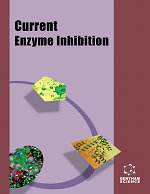
Full text loading...
We use cookies to track usage and preferences.I Understand
The imbalance between free radical formation and antioxidant defence leads to the development of oxidative stress. The search for substances that would mitigate or prevent the effects of oxidative stress remains relevant.
Our goal was to compare the antioxidant and mitigation effects of L-glutamic acid (L-Glu) and N-acetylcysteine (NAC) alone or in combination using a battery of biomarkers of oxidative stress such as reduced glutathione (GSH) superoxide dismutase (SOD), catalase (CAT), glutathione peroxidase (GPx), glutathione reductase (GR), glutathione transferase (GST) and lipid peroxidation, determined as a content of lipid hydroperoxides (LOOH) and thiobarbituric acid reactive substances (TBARS). Histopathological examination of the liver was also performed.
Experimental rats were divided into five experimental groups. Exp.1: was treated with CCl4 only, Exp. 2: was treated with CCl4/L-Glu, Exp. 3: was treated with CCl4/Glu/NAC. Exp. 4: was treated with CCl4/NAC, Control 5: served as the control rats.
These findings suggest that the CCl4 leads to oxidative stress by depleting the antioxidant enzyme activities and increasing peroxidation products. The studied biochemical parameters were altered by the introduction of CCl4, which was normalised (to one degree or another) by L-Glu, L-Glu/NAC and NAC treatment.
The most remarkable protective effect was observed in groups of rats that were treated with L-Glu only. This conclusion was confirmed by histopathological findings which showed less severe hepatocellular necrosis, fibrosis and inflammation in CCl4/L- Glu and CCl4/L-Glu/NAC treated group, compared to the CCl4 group.

Article metrics loading...

Full text loading...
References


Data & Media loading...

